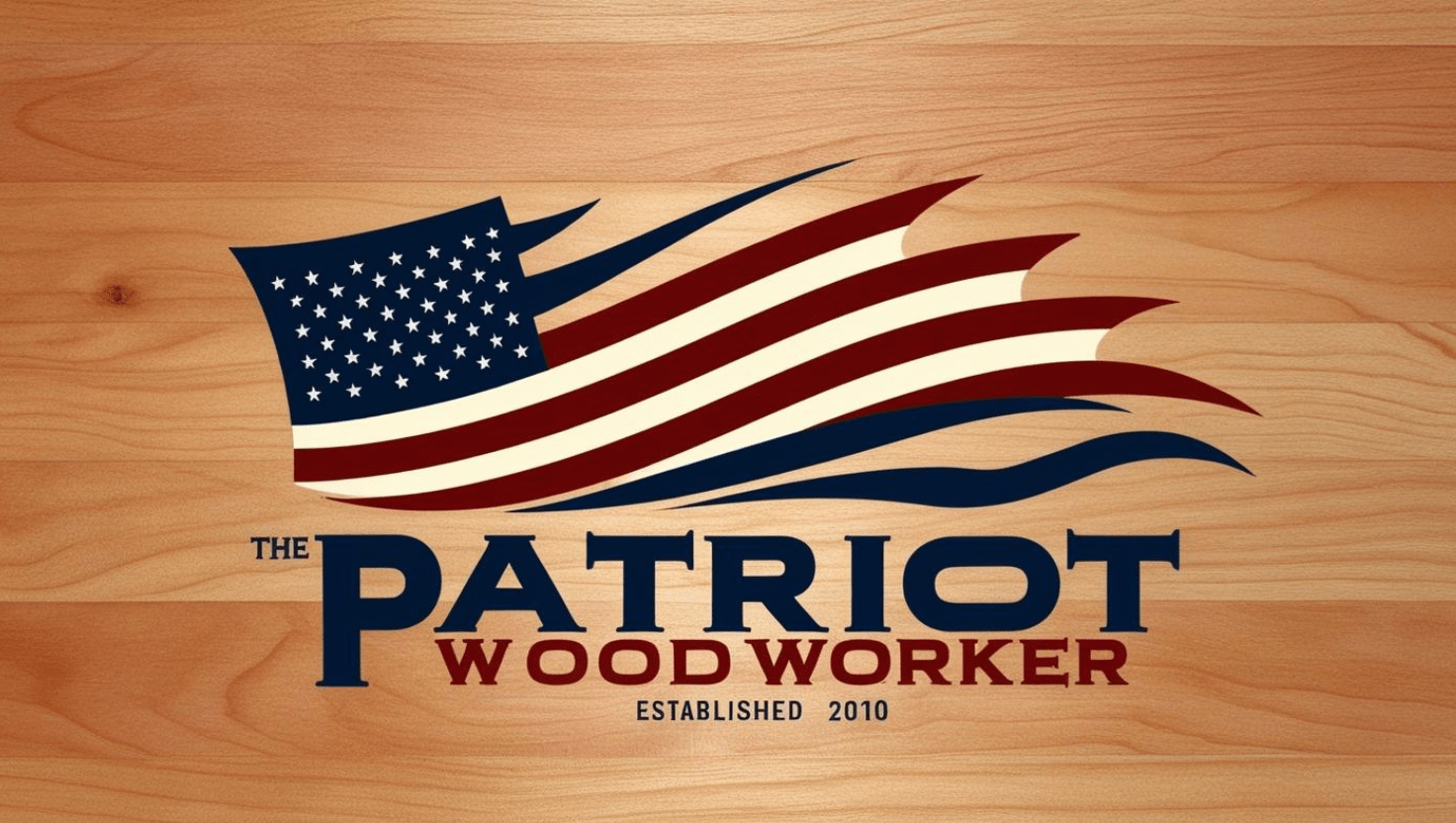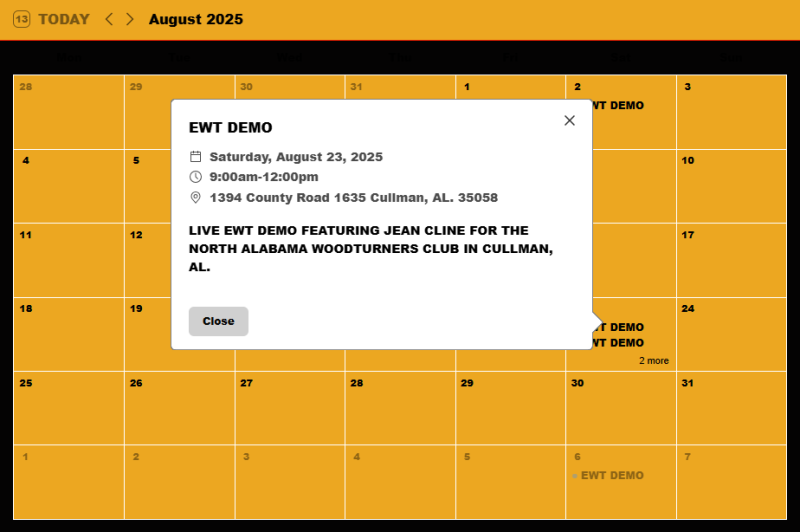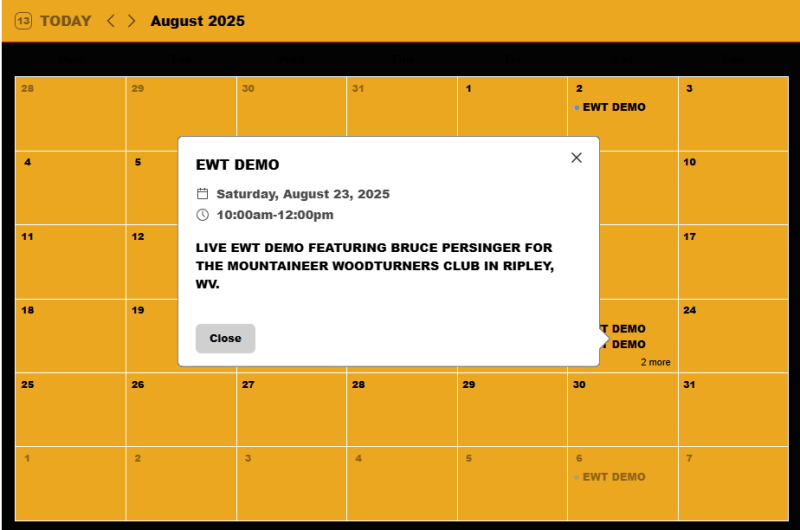Search the Community
Showing results for tags 'back hollow'.
-
Our Patriot Turners- Things are a little slow this week. I did an Easy Wood Tools/Club Demo last Thursday evening. Showed the process for doing the John Beaver wave bowls. I don't get the club meetings as often as I should. Seems that Thursdays are always busy. One of the members- a brother of one of my former school students- snapped this so he could see how old I have gotten. What’s Coming Up- Cindy Drozda's Tool Talk will continue the Emma, Tod, Cindy collaboration piece. It's Friday, August 15. It’s coming along nicely! I’ll be sanding and finishing, and showing how I sign my work. It’s free and open to everyone. Join me for talk about tools, woodturning tips, upcoming events, and interesting Woodturning stuff. Make comments, ask questions, or say hello. Win a prize in the Raffle! Subscribe to my list, and get the links to my free events by email. Please tell all of your woodturning friends and club members! https://streamyard.com/watch/C6bayNKnBhM7 SWAT is almost here! https://www.swaturners.org/swat-registration-2025.html For The Newbies- Richard Raffan uses a lot of scrapers for both inside and outside of bowls. In this video, he shares/describes his scraper arsenal. Picked this up from Ron Brown's newsletter. Some good advice about sharp(ening) tools- Free-hand Sharpening vs. Jigs For some people, a good piece of wood is a work of art. For others, it's just a blank canvas waiting to be transformed. And for a select few, it's a constant reminder that they don’t know what they don't know. When I first started turning wood, I was a walking, talking example of that last group. I was a greenhorn with a gouge, completely unaware of my own ignorance. Fortunately, I crossed paths with a seasoned pro named Nick Cook. Now, this guy could sharpen a tool by hand with his eyes closed, so I had to ask him: Why do you bother with those fancy jigs?" His answer was a master class in common sense. He gave me three simple reasons: 1. It saves time. A lot of time. 2. It's repeatable. You get the same perfect edge every single time. 3. Your tools last longer. They just do. Those three points really stuck with me. Later, while working the woodworking show circuit, I heard a lot of complaints. People loved the idea of sharpening jigs, but hated the time it took to set them up for different grinds. So, I went to work and created setup aids for 6 of the most common HSS lathe tools; 7 if you include the 4040-grind setup block. They are: Bowl Gouges, Spindle Gouges, Skews, Scrapers, Parting Tools, and Spindle Roughing Gouges. For the last 20 years, these setup aids have helped woodturners quickly and easily get the perfect edge. Most woodturners see their tools as a one-time purchase. They're not. They're a consumable, just like a lightbulb or a roll of paper towels. Sharpening a bowl gouge by hand often takes three or four passes. A good jig can do it in a single pass, removing less material in the process. Less material removal means your tools last longer. It’s simple math. But here’s the real kicker: if sharpening is quick and easy, you’ll actually do it. Most people will tolerate a dull tool far longer than they should because the idea of sharpening it is such a hassle. A sharp tool makes a clean cut. A dull one just scrapes and tears at the wood. When it comes to turning, that difference doesn't just affect the wood; it affects the entire process. Benefits of Sharp Chisels 1. Smoother Finish: A sharp chisel produces a much cleaner cut, resulting in a smoother surface that requires less sanding. This can save a lot of time and effort in the finishing stages of a project. 2. Reduced Tear-Out: When a tool is sharp, it shears the wood fibers cleanly. A dull tool, however, can tear out the grain, creating a rough, uneven surface that is difficult to fix. 3. Increased Control and Safety: Sharp tools are easier to control. A dull tool requires more force to make a cut, increasing the risk of a "catch," which is when the tool grabs the spinning wood violently. This can be dangerous and damage the workpiece. A sharp chisel, on the other hand, allows for more precise and controlled movements. 4. Faster Material Removal: A sharp tool removes material more efficiently. This means you can get through the initial shaping of a piece of wood much faster. 5. Improved Shavings: Sharp tools produce long, continuous shavings. Dull tools produce fine dust or small chips, which are a clear sign that the tool is not cutting effectively. It's important to note that even carbide tools, which are known for their longevity, will eventually become dull and require sharpening or a new tip. Regular sharpening is an essential skill for any woodturner to maintain tool effectiveness and achieve high-quality results. You should sharpen your wood-turning chisels frequently, even several times during a single project, to maintain their edge. Expand Your Horizons- Tomislav shared a great video showing a technique called "back hollowing". For those of us who learned the traditional method of hollowing this is really different! Mike Peace makes a small, threaded keepsake box for cremains. Turning Time With Easy Wood Tools- Found this video comparing the Easy Chuck to the Nova G3 Chuck. The Influencer does a pretty good job of comparing/contrasting the two. Some Easy Wood Tools Demos coming up- Did you know Easy Wood Tools sells "unhandled tools"? Check this out- https://www.easywoodtools.com/unhandled @Jordan Martindale New Turning Items- Ron Brown's new spindle duplicator is ready to go! https://longworthchuck.com/index.php?route=product/product&path=90&product_id=589 Hope Live Star Drive is available. This is available in he USA from- https://blackforestwood.com/products/live-star-drive?_pos=1&_psq=hope+live&_ss=e&_v=1.0 Everything Else- Tim Yoder cheated death to retrieve this piece of wood. Safe turning



.png.22e07a1fb21fbeb6273b7a23ed29c800.png)







